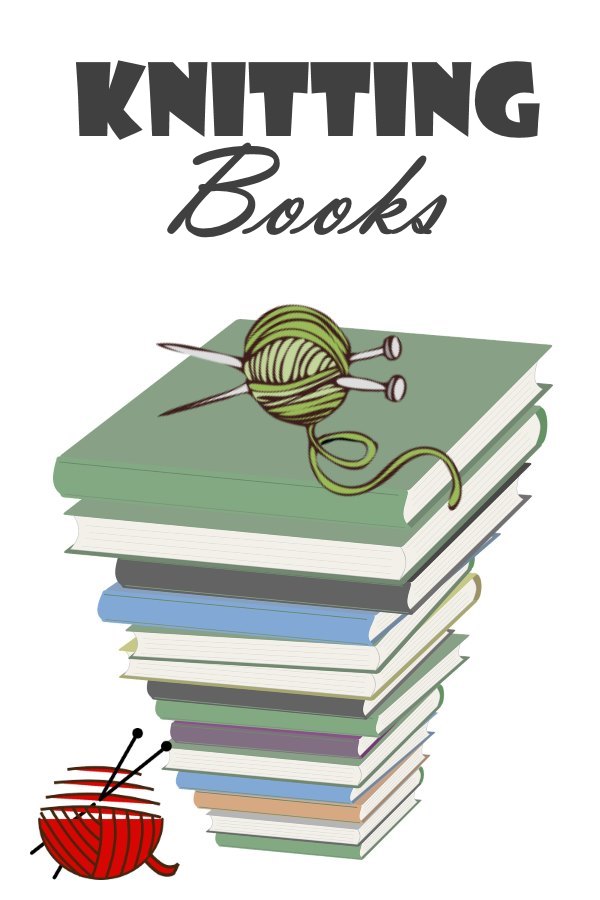- Home
- Knitting Books
Knitting Books
Best books about knitting
Revised by Janice Jones
The majority of books about knitting are not only a great pleasure to "dig" through their pages, but at the same time they are an excellent source of new ideas and inspiration for our knitting projects, a good way to refresh your memory about forgotten techniques and patterns or to solve some knitting problem.
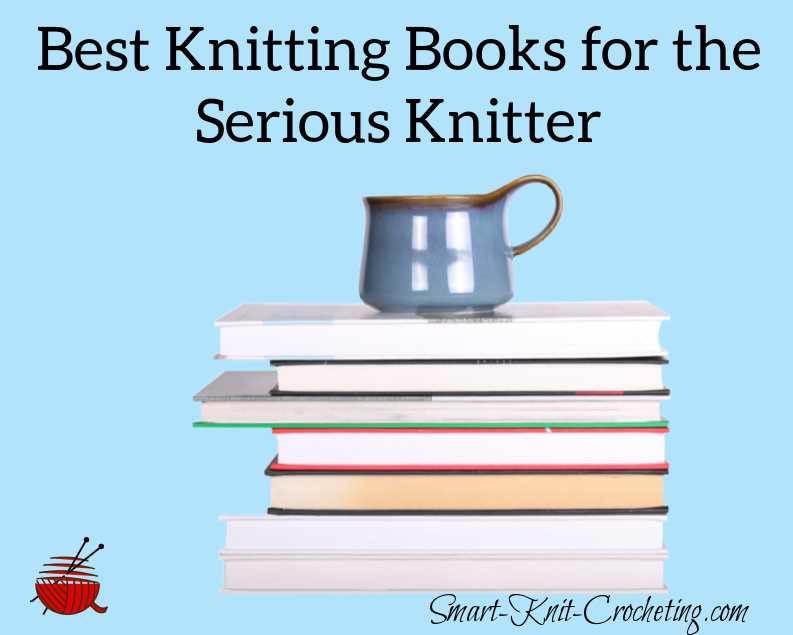 Best Knitting Books for the Serious Knitter
Best Knitting Books for the Serious KnitterWhy Consider a New Knitting Book?
With all the information now available on the internet and how to tutorials on YouTube, why would anyone consider spending their hard earned dollar on a knitting book?
What are our expectations about good book about knitting ? First of all it has to answer the question HOW can I..?
And the answers have to be found fast and easy.
Sure, you are saying, but why not "Google It?" The answer is simple, there are tons of very good advice out there and some of it is from Master Knitters, but a lot of it is from people who are out to make money.
I'm not trying to discourage you from getting info from the internet. Rather, I'm just hoping you'll become an informed consumer of this information.
Finding accurate information is not as easy as it sounds. Believe me, I've tried.
My Personal Story Trying To Find the Best Knitting Advice
At some point, most knitters will reach a crossroad in their hobby life. Some will continue down the same path, choosing projects that are comfortable to them. There's nothing wrong with that path.
But,
Others will want something more from their projects. Whether it is to create something new and different, or to investigate techniques that go beyond their level of competence.
Which one are you?
I'll admit that I was the former for many years - quite comfortable in my own abilities, but as time went on, I wanted more. I wanted to feel competent in a variety of techniques that I had previously tooted as being non essential.
Through the help of the Yarn Craft Council's Teacher Certification Programs and the The Knitting Guild Association's Master Knitter Certification, I became more interested in not only my own skills but in learning more about what others' had to say. That is when I began filling my bookshelves with extremely helpful knitting books.
This page lists all the books I have personally bought and found very helpful. It is not a sponsored list, and if you were to come to my home today, you would find these books on my personal bookshelves.
Must have or read knitting books
If you get them out of the library, or purchase your own copy for your own, you'll enjoy the great pictures and instructions. Have you got a favorite book that you rely on completely? Contact me and let me know why.
I have tried to divide my absolute favorite knitting books into categories:
- Beginner Technique Books
- Knitting Stitches for Beginners and beyond
- Specific Techniques such as finishing or colorwork
- Related Books such as Books About Yarn
A word about pattern books
I love knitting books about patterns as much as anyone, but I have left them out of this review article for one major reason. Everyone has their own personal style and normally when you want to make a specific item, you don't need an entire book about similar designs.
I think finding the right pattern takes time and it very well may be that you find that perfect design in a pattern book. Alternately, you may also locate a pattern online on a site such as this, or find one on Etsy or Ravelry.
Beginner Technique Knitting Books
Vogue® Knitting The Ultimate Knitting Book: Completely Revised & Updated

If I could only recommend one book to purchase, it would be this one. This is by far my most frequent go-to book for techniques, tutorials, and even pattern ideas.
For beginners, there are plenty of tutorials that teach basic skills, such as knitting simple stitches. Most beginners will benefit from discovering tricks and tips for making simple designs. I love the section on fibers, natural and synthetic, as well as how to choose the best knitting needles. From there, intermediate skills include color work and lace.
For more seasoned knitters, the book delves into advanced techniques and sweater and other complex designs. This is definitely a good all-around book for anyone interested in knitting. Check for prices on Amazon.
The Knitter's Book of Knowledge: A Complete Guide to Essential Knitting Techniques
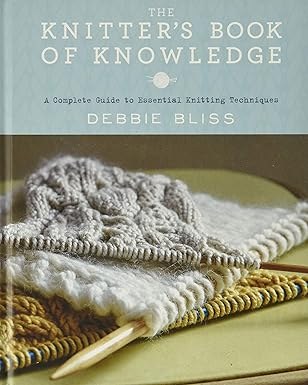
By Debbie Bliss
Another must-have knitting reference by Debbie Bliss, there's a lot to love about this book. It's well-written, well-organized, and offers a wealth of information for both the beginner and advanced knitter.
I'm not one to read a reference book from cover to cover, but it's nice to be able to use the extensive Table of Contents or Index to access just the technique one needs.
The one thing that was a bit distracting was the font and background colors, which made my eyes strain. Other than that, I highly recommend this as a go-to reference book for knitters of all levels. Check the price on Amazon
Knitting in Plain English
by Maggie Righetti
This book is still available for sale through used-book stores and offers a little different approach to knitting books. As I read through the book, I felt that the author was speaking directly to me in a very conversational manner.
There are few photographs, but plenty of drawings, typical of the time when the book was written, 2007. There's even a short section on projects to make based on the skills and techniques provided in the book.
Readers Digest Knitters Handbook

Written by Montse Stanley in 1999, this volume is still considered a classic in its own right. It is organized so that finding a topic is easy, although I did notice that some of the technique names differ from how they are labeled in later reference books.
I do like that Stanley offers more than one way to perform a particular technique. It may be confusing to beginners, but more advanced knitters will recognize that there are always more ways to accomplish the same thing. Check Amazon for the price.
The Knitter's Companion
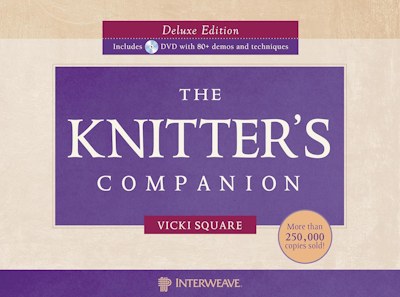
by Vickie Square (2010). This is one of my favorite little books to keep in my knitting bag for a quick reference. At only 137 pages, you won't find everything you need to know about knitting, but what you will find is a short, concise explanation and simple drawings that help you either learn the technique or refresh your memory.
I don't recall receiving the accompanying DVD, but I no longer own a DVD player so that it wouldn't have helped me. Check Amazon for the price.
The Principles of Knitting: Methods and Techniques of Hand Knitting

by Hemmons Hiatt, June and Jesse Hiatt
This book is a real handful. I actually went to the Amazon site to see if I could find a weight on it. It wasn't surprising to me to find that it weighed over 5 pounds. Now, that's not heavy, but for a book that boasts more than 700 pages, it says a lot about the volume's colossal nature.
There's very little that is not covered in this book, but it is important to note that all the photographs and line drawings are in black and white. This could be a problem for young knitters accustomed to colorful photos and diagrams.
Still, I believe that it is one of the most comprehensive books on the market today for the serious knitter. Check pricing on Amazon
Big Book of Knitting
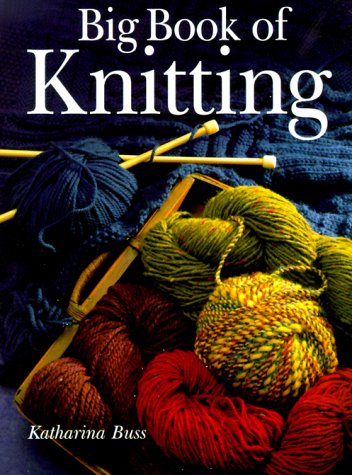
by Katharina Buss
This is a good all-around reference for knitters seeking information on basic techniques, decorative tips, and finishing guidance. I love this book because it has obvious directions, and the colored photographs and diagrams are easy to follow.
It's not only a beginner book, though any beginner would find it very useful, but it also goes well beyond the basics and provides tips and tricks to increase your mastery of knitting. Check pricing on Amazon.
Knitting Books that Teach How to do Specific Stitches
Knit and Purl Stitches: 250 to Knit (The Harmony Guides)

750 Knitting Stitches: The Ultimate Knit Stitch Bible

If your goal is to learn how to do as many knit stitches as you can, they you're in luck. But this book is much more than a stitch dictionary.
As is the case with most knitting books, it begins with the basics (knits ad purls, increases and decreases, casting on and binding off) but then goes on to complex cable and lace designs, color work, and finishing techniques.
It was based on the old Harmony series which are a classic for knitters and is one part of a two part series on knitting and crocheting.
Vogue® Knitting Stitchionary™ Volume One: Knit & Purl: The Ultimate Stitch Dictionary from the Editors of Vogue® Knitting Magazine

This is just one in a series of volumes devoted to specific knit stitches. You might also want to check out the following:
Volume Two:
Volume Three:
Volume Five:
Volume Six:
Vogue® Knitting Stitchionary® Volume Six: Edgings
Knitting Books for Specific Techniques
Circular Knitting Workshop: Essential Techniques to Master Knitting in the Round Paperback

Many people learn how to knit by using circular needles, but if you are like me, our flat knitting techniques spanned many years before we tried out circular knitting whether it be on circular knitting needles or double-pointed needles.
I was very glad to find this book because it not only details the tools of the trade but how to use them. But it doesn't stop there. So many tricks and tips are offered, especially one that I find so difficult to master, the jogless join. Of course, that's only one area that is covered in this book.
It is written by a well-known knitting expert just as if you were sitting there in a workshop. There are plenty of patterns to try out your skills whether you're a beginner or advanced knitter - there's something for everyone.
by Margaret Radcliffe
The Knitter's Book of Finishing Techniques

By Nancie M. Wiseman
Excellent finishing techniques allow our projects to go from homemade to handmade. But many basic books don't cover them so many beginners follow the directions of the pattern in anyway they see fit. For example, have you ever had a pattern that states, "sew pieces together and weave in ends."
If you didn't realize that there are many ways to do this, you might assume you are doing it correctly. That's fine for some knitters, but at some point in your "career" you may decide that you want something a bit more polished. This book is for you.
The Essential Guide to Color Knitting Techniques: Multicolor Yarns, Plain and Textured Stripes, Entrelac and Double Knitting, Stranding and Intarsia, Mosaic and Shadow Knitting, 150 Color Patterns

By Margaret Radcliffe
When you are ready to invite some color into your life, then it's time to check out this book. There are many books on color techniques, but this one was written by one of my favorite authors.
After a rather lengthy section on color theory and ways to combine colors into pleasant designs, the author goes into detail about the various ways knitters incorporate color into their work. From basic stripes to Intarsia, and Fair Isle, all is covered in a clear way that is easy to follow.
Color work is not always considered to be a beginner technique, but Margaret Radcliffe's clear way of writing makes it easy even for a beginner to follow along.
Cast On, Bind Off: 54 Step-by-Step Methods; Find the perfect start and finish for every knitting project

By Leslie Ann Bestor
When I first learned to knit, I was taught the Long-tailed method which until well into my knitting projects did I realize that it was not the only way to cast on. Surprise! I've even spoken to some knitting instructors that tell me that they do the cast on and knit a few rows for their students, bypassing the whole process of learning to cast on.
Once you gain a little experience, knowing techniques to bind off or cast on makes sense and becomes increasingly practical. This book takes a step by step approach to teaching a variety of different techniques whether you just want a basic one or a stretch cast on, it's all there for you.
Related Books such as Books About Yarn
The Knitter's Book of Yarn: The Ultimate Guide to Choosing, Using and Enjoying Yarn

This book by Clara Parkes is a great little book for anyone interested in fiber arts. I first purchased this book because I began noticing differences in yarns that were supposed to be very similar. For example, some yarns felt great moving through my fingers and others were rough. Some tend to split easily while others were very easy to use. It was at this point that I realized I needed to know a bit more about the yarn I was selecting.
Whether you've come to this conclusion or passed it, this is still a good reference book. It also includes quite a few patterns if you want to put your new found knowledge to work.
The Fleece & Fiber Sourcebook: More Than 200 Fibers, from Animal to Spun Yarn

This book is not for the casual knitter, but rather for people truly interested in the fiber industry. It chronicles every sheep breed along with all other animal sources used in the making of yarn.
From a detailed explanations of the history and origins of the breed to exhaustive facts about the fleece weight, diameters, colors, and characteristics. There is specifics about fiber preparation, dying and spinning.
It is a comprehensive volume of information for those in the industry as well as all serious weavers and spinners. But if you are a serious student of fiber, this book offers a section within each type of fiber specific to knitting and crocheting.
By Carol Ekarius
Information about crochet books can be found on the Crochet Books page.
